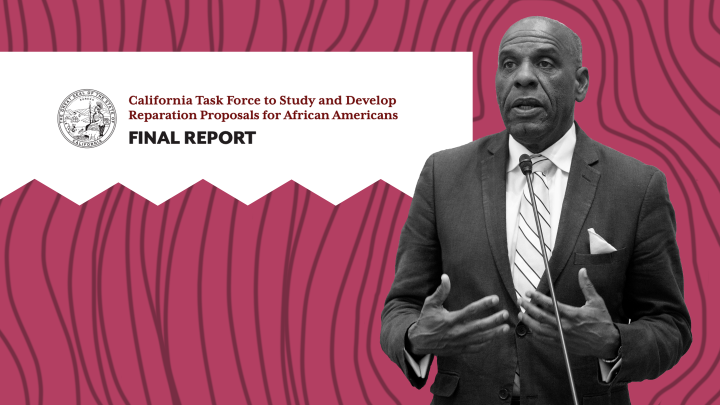
2024 will be a big year for the reparations debate in California
2024 will be a big year for the reparations debate in California

With 2024 here, California lawmakers are set for an intense debate about economic reparations for Black residents descended from enslaved ancestors.
In 2020, California became the first state to form a reparations task force. In June, that task force issued a nearly 1,100-page report for the state legislature to take up. Sen. Steven Bradford, a Democrat who was one of the nine members on that task force, introduced a bill in August that would create a state agency to carry out reparations, if they are approved. The bill, SB 490, could be voted on this year.
The California Task Force to Study and Develop Reparation Proposals for African Americans spent three years studying and developing reparation proposals. Bradford believes a government agency is the next step in the process, before the California Legislature starts looking at exact dollar amounts or benefits.
“That’s what makes it real, once you have a dedicated governmental entity that says, ‘OK, we’re charged with delivering, identifying who’s eligible and determining what reparations look like,” Bradford said.
The agency would administer reparations as atonement for California’s history of slavery and the institutional racism that is illuminated by the task force’s report. For example, during the Gold Rush, starting in 1848, up to 1,500 enslaved Black people were forcibly brought to California by Southern miners seeking fortunes. Two years later, California became a state — technically a free state. But miners exploited legal loopholes to sustain slavery, and there was a harsh fugitive slave law.
And even with abolition, racial violence and systemic racial injustices continued throughout the 20th century.
“We identify basically 12 areas that we saw the state has engaged in producing harms against the African American community,” said Jovan Scott Lewis, a professor at the University of California, Berkeley, and a member of the state’s reparations task force. “Things like property, property removal, to issues like mass incarceration and contemporary gentrification, which really are the kind of consequences of what we can think of as the practice of redlining that began in the 1930s.”
The task force cited disparities in housing, health care, criminal justice and business ownership, and it provided a formula for calculating the resulting economic losses. But the report does not mention specific payment amounts for reparations, which is the most controversial aspect.
Last March, a San Francisco reparations committee proposed a $5 million compensation package for each qualifying Black adult. This a number that Bradford clarifies did not originate from the overarching state task force.
“I think the $5 million that you hear right now, that’s just a distraction,” Bradford said. “That’s those naysayers who are finding any reason not to support reparations.”
Richard Rothstein, who wrote “The Color of Law,” about government-enforced segregation in the U.S., doubts whether reparations for Black Americans could even be passed in California – or anywhere.
“They’re talking about billions of dollars paid to African Americans in California, it’s not going to happen,” Rothstein said. “I agree with them completely, but they’re talking about something that is much more politically unrealistic than going after specific crimes that have been committed in violation of our Constitution.”
But while there may be disagreements about what’s politically viable, there’s one reality that people on all sides of the debate can agree on: Any path to reparations would be paved with complexity.
“It’s going to be a lot of challenges, not only legislatively to get our colleagues on board, but it’s public opinion of just showing why this is important, why this is needed,” Bradford said. “And more importantly, why this is owed to these descendants, again, that built this country.”
In our series “Golden Promises: The Battle Over Slavery Reparations in California,” “Marketplace Morning Report” brings you more of the history, details and challenges of the state’s reparations movement. Part 2 focuses on who would be eligible for reparations. Part 3 looks at alternatives to reparations and other forms of restitution.
Clarification (Jan. 3, 2023): Previous versions of this story mischaracterized Richard Rothstein’s opinions about appropriate alternatives for reparations.
There’s a lot happening in the world. Through it all, Marketplace is here for you.
You rely on Marketplace to break down the world’s events and tell you how it affects you in a fact-based, approachable way. We rely on your financial support to keep making that possible.
Your donation today powers the independent journalism that you rely on. For just $5/month, you can help sustain Marketplace so we can keep reporting on the things that matter to you.












